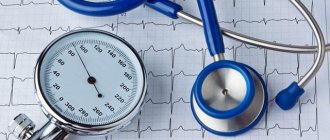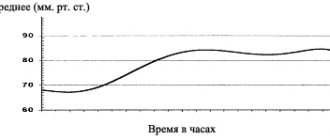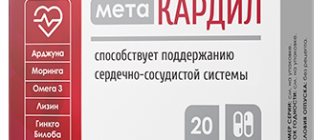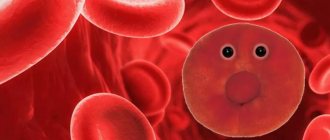In order to approximately calculate what blood pressure should be normal for a child at a given age, you can use the following formulas:
- Upper (systolic) blood pressure - 1.7 x for age + 83
For example: a child is 10 years old. So 1.7 x 10 + 83 = 100
- Lower (diastolic) pressure - 1.6 x age + 42
For example: the same 10-year-old child. So 1.6 x 10 + 42 = 58
- Or: top: 90 + (n) and bottom: 60 + (n). Where (n) is the number of years.
Causes
The rise in pressure is the response that is created when a stressful situation occurs. As a result, hormones begin to be produced by the higher centers of the nervous system. They affect the vascular wall, which spasms. High levels of aldosterone lead to sodium and water retention in the body. Subsequently, fluid accumulates that would normally be excreted by the kidneys.
The amount of water in the vascular bed increases, this leads to an increase in pressure. Over a period of time, thickening of the blood, narrowing of the lumen in the vessels and thickening of their walls are noted. Such changes in the body lead to a persistent increase in vascular resistance. As a result, arterial hypertension becomes stable, and its condition already becomes irreversible. As the disease progresses, the walls of blood vessels become more permeable, which leads to the development of changes in various organs and tissues.
The causes of hypertension in childhood are:
- excess weight;
- wrong lifestyle;
- frequent stress;
- aggravating heredity;
- taking certain medications;
- chronic diseases.
Unlike adults, children do not suffer from atherosclerosis, and therefore it is not among the reasons for the development of hypertension. The main problem is excess weight and varying degrees of obesity. Every year, up to 20,000 new cases of overweight in children are recorded. Obesity develops at any age, but most often it is typical for urban girls aged 10-13 years.
In addition to this, many teenagers smoke and drink alcohol. A large amount of salty food also has a negative effect. Hypertension in children also appears with constant exposure to stress. The risk group most often includes those who have an excitable nervous system and an unbalanced psyche. In many cases among young men and adolescents, mood swings are associated with hormonal changes during puberty.
If there have already been cases of hypertension in the family among close relatives, then, with a high degree of probability, the child will develop the same thing. Under the influence of provoking factors, the disease can occur in adolescence. Heredity is especially strongly transmitted through the maternal line.
When treating with certain drugs, it is important to consider the side effects and the age at which they can be given to a child. Vasoconstrictor drops to relieve nasal congestion during a runny nose can increase blood pressure, which provokes the appearance of symptoms of hypertension.
After receiving a skull injury, some children experience pressure surges for a long time. In addition, chronic diseases are also taken into account. It is believed that sinusitis and caries can provoke symptoms of hypertension. Among kidney diseases, a negative effect on blood pressure is reflected in the presence of a history of glomerulonephritis and pyelonephritis. In case of pathology of the cardiovascular (aortic valve insufficiency, coarctation) and endocrine systems (Itsenko-Cushing's disease, pheochromocytoma), pressure must be measured. Most often in young patients it will be increased.
Age groups
Among children of different ages, the clinical picture will look the same. Parents should be wary of poor tolerance to hot weather. This may manifest as dizziness or loss of consciousness. Children often complain of headaches. A sudden increase in pressure is characterized by hemorrhage in the eyes. This reaction is typical when a sudden stressful situation occurs, and after the child calms down, the pressure returns to normal.
Additional signs include tinnitus, darkening of the eyes, or flashing spots. When the brain, blood vessels, kidneys or heart are damaged, specific signs appear. Parents begin to notice deterioration in the child’s memory, sleep disturbance, shortness of breath, and rapid heartbeat.
A prolonged increase in pressure in the absence of help quickly leads to kidney damage, which is typical for children of any age group. As a result, there is an increase in urination and its occurrence at night.
For children, critical blood pressure indicators are identified, which are typical for different age categories. From 3-6 years it should be no more than 116/76 mm. rt. Art. Upon reaching the age of 6-9 years, the indicators are 122/78 mm. rt. Art. For older children (10-12 years old), the pressure level should not exceed 126/82 mm. rt. Art. From 13 to 15 years old it is no more than 136/86 mm. rt. Art. Children from 16 to 18 years old have a blood pressure limit of no higher than 142/92 mmHg.
When the indicators increase to 140/90 mm. rt. st the following symptoms are noted:
- pain in the heart area;
- redness of the facial skin;
- nausea;
- vomit;
- tremor (shivering) of the limbs;
- excessive sweating;
- the appearance of nosebleeds;
- swelling of the face and limbs.
With a sharp jump in pressure and high numbers, signs of a crisis may appear. Children of any age are characterized by certain signs by which it can be suspected. If a child develops cold sweat, speech impairment, vision deterioration, severe headache and unmotivated anxiety, then these are symptoms that require prompt assistance.
Causes of increased intracranial pressure or hydrocephalus may include:
- congenital abnormalities of brain development;
- perinatal infectious, hypoxic, traumatic processes;
- tumors;
- meningitis;
- injuries;
- hereditary metabolic and degenerative brain diseases, etc.
In any case, intracranial hypertension syndrome has similar clinical manifestations . This is a headache, mainly in the morning, without clear localization, bursting, intensifying in paroxysms, often accompanied by vomiting, not associated with food intake. The headache intensifies when coughing, sneezing, or straining. Additional symptoms: a feeling of “fog” before the eyes after being in a bent position, lethargy.
Treatment
The main goal of treating hypertension in children is to achieve normalization of blood pressure and maintain it within normal values. This is necessary to reduce the risk of developing complications from the cardiovascular system. If a child has an increase in blood pressure, but it remains within the normal range, then non-drug methods of therapy are recommended.
Medicines are prescribed if grade 1 hypertension is detected and there is a low risk of complications. If there is a tendency to their development, then medications are used simultaneously with other methods of treatment.
Hypertension in children is treated with drugs taking into account individual characteristics and the presence of concomitant pathology. Initially, minimal dosages are prescribed to reduce the risk of side effects. It is advisable to increase the amount of the drug per dose only if it is well tolerated and the hypotensive effect is insufficient. If there is no effect, then the medicine is replaced with another.
It is recommended to prescribe drugs with long-term action (up to 24 hours) with a single dose. It is customary to evaluate the effectiveness of prescribed therapy after 10 weeks from the start of treatment. Its minimum duration, if the hypotensive effect is well obtained, should be at least 3 months.
When the doctor has correctly selected the drug for the child after the end of therapy, it is necessary to gradually reduce the dosage. If the pressure remains consistently normal, then it is completely canceled. It is necessary to monitor effectiveness once every 3 months.
Therapy without the use of medications is prescribed to all children, regardless of blood pressure level. It includes:
- quitting smoking and drinking alcohol;
- weight loss if overweight;
- optimal physical activity;
- proper nutrition;
- physiotherapy.
To reduce the number of extra pounds you need sufficient physical activity and a certain diet. To maintain good health, it is recommended that children over 5 years old engage in intense physical exercise for half an hour, 4 times a week. This includes skiing, fast walking, and outdoor games. If a child plays sports, then certain restrictions are established in the presence of grade 2 hypertension.
Increased excitability of the nervous system is typical for many children and adolescents. In such a situation, viewing films that affect the psyche are limited. Parents are advised to strictly prohibit their children from playing computer games. Walks in the fresh air are necessary every day, preferably a few hours before bedtime. The room in which the child sleeps should be ventilated for up to 30 minutes several times a day. This will ensure that he falls asleep quickly and sleeps soundly.
In adolescence, if a child has bad habits, it is important to convince him to give them up. To do this, it is recommended to avoid situations in which the child wants to smoke.
Parents need to be given advice to support their child in this, which will make it much easier for the child to give up the addiction to tobacco.
One of the main components of non-drug treatment is proper nutrition. Pediatric arterial hypertension can be easily corrected if diet therapy is started in a timely manner. The diet must contain vitamins, microelements, fats, carbohydrates and proteins in order to provide the child’s growing body with everything necessary. It is important to limit salt intake, taking into account its presence in foods. The daily amount for hypertension is no more than 3 grams. In large quantities, it delays the excretion of fluid. Salt enters the vessels and increases pressure on their walls. It is also necessary to limit daily fluid intake (no more than 2 liters), depending on the level of pressure.
The healthiest foods are considered to be boiled meat, dairy products, fresh vegetables and fruits. It is necessary to limit the consumption of carbonated drinks, fried, smoked and spicy foods, as well as canned food.
Additionally, the child must attend 10 physiotherapy procedures. Depending on the condition and concomitant pathology, electrophoresis, galvanization or electrosleep is used. Massage, acupuncture and water procedures are prescribed in the absence of contraindications. For herbal medicine for hypertension, herbs that have a diuretic (birch buds or lingonberry leaves) and a calming effect (motherwort, sage, valerian or St. John's wort) are suitable.
How is arterial hypertension treated in adolescents and children: general recommendations
The first stage of treatment for patients with hypertension is always lifestyle modification. The child needs to limit the amount of salt consumed. Salted fish, smoked meats, lard, marinades and any other similar products should be excluded from the patient’s diet.
If arterial hypertension in a child is provoked or accompanied by obesity, you need to choose a low-calorie diet to reduce excess weight. All patients without exception will benefit from moderate physical activity: swimming, walking, physical therapy.
Since high blood pressure in many children is associated with stress, it is necessary to avoid conflict situations in the family and school whenever possible. Treatment regimens for hypertension in children may also include soothing herbal remedies.
Some teenagers smoke. In order to normalize blood pressure, it is very important to convince the young patient to give up the bad habit.











